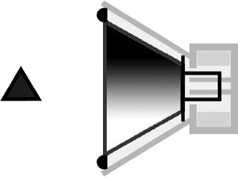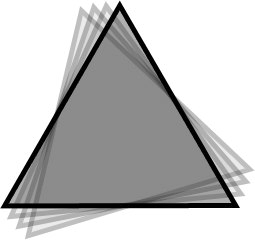
The shape of things to come...
Previous attempts to create full-range speakers utilized the traditional driver modeled after the human eardrum; but the eardrum is a receiver, not a producer, of sound. The traditional driver moves back and forth like a piston in a car engine (pistonic movement). Planot breaks with that tradition. Planot approaches sound production from a purely mechanical perspective, not from a notion of mirroring natural design.
The old cone-shaped diaphragm is traded for a tall vertical shape. The diaphragm pivots about its long axis. The tensile forces that cause old-style speakers to flex and distort are bypassed. The torsional forces that act on the Planot diaphragm are dissipated along its length and volume.
As far as sound is concerned, the Planot driver is a one-sided surface. There is no back side to the Planot driver. There is no audible phase cancellation from the back-wave because there is no back-wave of a traditional pistonic driver. There is no need for a box to contain the back-wave.
The Planot driver's long faces' width is tailored to the highest frequency it is to reproduce. As with a full-range driver this may be 3/4" wide to accommodate a 18,000 Hz sound. A triangular cross section provides the best balance of several important parameters; it has a high angle of attack; a large part of its mass is concentrated near the axis of rotation; a triangle is the most rigid structure constructed of planes.
A typical Planot driver would be triangular or square in cross section and 48 inches long, with each face 3/4 inches (to 1 inch) across the short dimension. This means that surface area of each face is equivalent to that of a six-inch cone driver, and the total surface area of three sides is approximately that of a 10-inch cone. Note that the planot driver does not follow the inverse square law of sound propagation as it is not a point source. The sound of a PLANAR wave falls off at 3 dB per unit measure and the traditional point source speaker sound falls off at 6 dB per unit measure.

Shape

